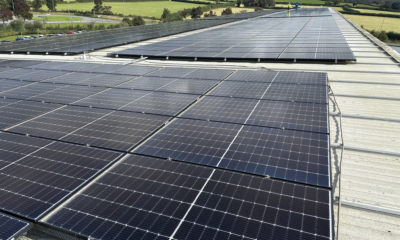Technology
Liquid Silicone Injection Molding: Everything You Need to Know
Published
3 months agoon
By
IQnewswire
Liquid Silicone Injection Molding (LIM) is transforming the way industries manufacture precision silicone parts. From medical devices to automotive seals, this innovative process offers unmatched versatility, durability, and efficiency. In this guide, we’ll explore what LIM is, its benefits, applications, and why it’s the go-to choice for many industries.
What Is Liquid Silicone Injection Molding?
Liquid Silicone Injection Molding is a manufacturing process that involves injecting liquid silicone rubber (LSR) into a mold cavity. Once injected, the silicone is cured at high temperatures to produce a durable, flexible, and heat-resistant component.
How the LIM Process Works
The LIM process involves several key steps:
- Mixing: Two liquid silicone components (A & B) are mixed in a precise 1:1 ratio.
- Injection: The mixture is injected into a heated mold under high pressure.
- Curing: The silicone is vulcanized (cured) inside the mold, solidifying it.
- Ejection: Once cured, the part is ejected and ready for finishing or assembly.
This method is highly automated, making it ideal for producing high volumes of parts with consistent quality.
Key Benefits of Liquid Silicone Injection Molding
1. High Precision and Repeatability
LIM offers exceptional dimensional accuracy, making it perfect for tight tolerance parts.
2. Excellent Material Properties
Liquid silicone rubber is heat-resistant, chemically stable, biocompatible, and extremely flexible—even in extreme temperatures.
3. Fast Cycle Times
Because LIM is an automated process, it offers rapid cycle times, increasing production efficiency.
4. Minimal Waste
Closed-loop systems and precision injection minimize material waste, contributing to cost efficiency and sustainability.
Applications of Liquid Silicone Injection Molding
LIM is used across various industries, including:
Medical and Healthcare
- Catheters
- Respirator masks
- Seals and gaskets
- Baby bottle nipples
Automotive Industry
- Grommets and seals
- Connectors and housings
- High-performance engine components
Consumer Products
- Wearable tech
- Kitchen utensils
- Baby care products
Electronics
- Keypads
- Encapsulated components
- Waterproof seals
Tooling for Silicone Injection Molding
Precision Mold Design
LIM requires specially designed molds made from hardened steel or aluminum, depending on the production volume.
Cold Runners vs. Hot Runners
- Cold runners help reduce material waste by reusing uncured LSR.
- Hot runners are less common in LIM but used in specialized setups.
Proper mold design ensures part integrity, cycle efficiency, and repeatability.
Challenges in Liquid Silicone Injection Molding
While LIM offers many advantages, it does come with challenges:
1. Initial Tooling Cost
Custom molds can be expensive to produce, especially for complex parts.
2. Material Handling
LSR must be handled and stored correctly to avoid contamination or premature curing.
3. Design Constraints
Certain design limitations exist due to the flow characteristics of liquid silicone.
However, with proper planning and expertise, these challenges can be effectively managed.
Best Practices for Silicone Injection Molding Design
To ensure the success of your LIM project, consider the following:
- Uniform wall thickness to prevent voids or air traps
- Draft angles for easier part ejection
- Avoid sharp corners to reduce stress concentrations
- Use venting and gating correctly to ensure complete mold filling
Working with an experienced silicone injection molding partner can make a big difference in part performance and manufacturing efficiency.
Environmental Impact and Sustainability
Liquid silicone rubber is inherently more sustainable than many petroleum-based plastics. Its durability means longer product life, reducing the need for replacements. Moreover:
- LIM processes generate minimal waste
- Many LSR grades are recyclable
- LSR is non-toxic and hypoallergenic
As manufacturers move toward greener practices, LIM fits perfectly into eco-conscious production lines.
Choosing the Right Silicone Injection Molding Partner
When selecting a manufacturing partner for your LIM needs, evaluate:
- Experience with LSR and mold design
- Production capabilities (volume, tolerances, cleanroom facilities)
- Certifications (ISO 13485 for medical, IATF 16949 for automotive)
- Material sourcing (medical-grade, FDA-compliant, UL-rated)
A knowledgeable partner can assist with everything from prototype to mass production.
Future of Liquid Silicone Injection Molding
The LIM industry continues to grow with advancements in:
- Micro-molding for tiny medical and electronic parts
- Overmolding with LSR on plastic or metal substrates
- Smart materials like conductive silicone
- Sustainable LSR made from renewable resources
These innovations ensure that LIM remains a cornerstone of precision manufacturing.
Conclusion
Liquid Silicone Injection Molding is a game-changing process that enables the production of high-performance silicone components with superior accuracy, speed, and quality. Its wide range of applications across industries like medical, automotive, and consumer products proves its versatility. Whether you’re launching a new product or scaling an existing one, LIM offers a cost-effective, reliable, and eco-friendly solution.


Why Companies Worldwide Are Hiring Power BI Developers

Experience Pure Android Gameplay with MuMuPlayer Emulator

A Guide To Solar PV For Homeowners

How to Convert a Historic Building into a Hotel: a 2025 Guide

How You Can Integrate AI into Your Small Business For Faster Growth

File Recovery on Android: Myths vs. Facts

Cooler, Safer, Clearer: Why Quality Window Tint Is a Smart Upgrade in 2025

How Medium-Sized Businesses Actually Handle Their Books

Best Travel Vacuum Bags: Pack More and Worry Less with Vacbird Storage Bags

Start Your Morning Right: The Real Benefits of Himalayan Pink Salt and Lemon Water

Carol Kirkwood’s Journey: Her Real Age, Husband, Career, and More

Revolutionizing Healthcare: The Emergence of AI-Driven Analytics

How Machine Learning and AI are Redefining the Future?

Aliza Barber: Meet Lance Barber’s Wife, Age, Life, Profile, Career and Net Worth

Evelyn Melendez: Jordan Knight’s Wife Bio, Marriage, Family, Career and Net Worth

Ilan Tobianah Biography: Family, Marriage, Lifestyle, Career and Net Worth

Who was Alice Marrow? Everything to Know About Ice-T’s and His Mother

King Von’s Autopsy Report: The Truth Behind the Tragic Death

Meet Otelia Cox: The Supportive Wife of Tony Cox – A True Fairy Tale Romance

Tea Leoni and Tim Daly Split – A Closer Look at Their Relationship and Breakup

Why Companies Worldwide Are Hiring Power BI Developers

Experience Pure Android Gameplay with MuMuPlayer Emulator

A Guide To Solar PV For Homeowners

How to Convert a Historic Building into a Hotel: a 2025 Guide

How You Can Integrate AI into Your Small Business For Faster Growth

File Recovery on Android: Myths vs. Facts

Cooler, Safer, Clearer: Why Quality Window Tint Is a Smart Upgrade in 2025

How Medium-Sized Businesses Actually Handle Their Books

Best Travel Vacuum Bags: Pack More and Worry Less with Vacbird Storage Bags

Start Your Morning Right: The Real Benefits of Himalayan Pink Salt and Lemon Water
Category
Trending
-

 News3 months ago
News3 months agoCarol Kirkwood’s Journey: Her Real Age, Husband, Career, and More
-

 Health2 years ago
Health2 years agoRevolutionizing Healthcare: The Emergence of AI-Driven Analytics
-

 Technology2 years ago
Technology2 years agoHow Machine Learning and AI are Redefining the Future?
-

 Celebrity2 years ago
Celebrity2 years agoAliza Barber: Meet Lance Barber’s Wife, Age, Life, Profile, Career and Net Worth






